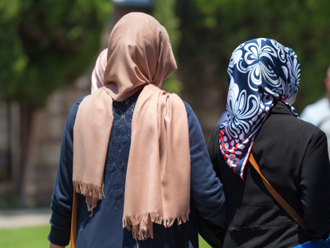
When we think about a culture, it is primarily defined in our minds by its people, their unique characteristics and values. Travelling to a new country, the foremost and overarching impression is gained from our interactions with the local people. Our perception of the place is only marginally impacted by its aesthetics, landscapes, infrastructure and public services offered, and largely by the people’s attitudes, their hospitality and generosity … or lack of them.
Cultures are shaped by people’s values, traditions and intellectual achievements. Therefore, they are prone to evolution and change, for better or for worse, due to social, political, economic or even environmental factors. It is complex and constantly in flux.
Interestingly, the culture is not passed on to us genetically. Cultural inheritance refers to the storage and transmission of information through communication, imitation, and learning. It is considered the final stage in hereditary evolution, but it is not biological but shared and imbibed, not coded in our genes.
What makes a great culture? One that is based on virtues evolves with the pillars of harmony, discipline, law and order, among others, gaining the respect and admiration of other cultures. This cumulative cultural inheritance needs to be maintained and passed on successfully, to preserve the social and economic fabric of a country. It can be facilitated by long-term policies, programmes and plans to mould and influence society’s values and outlook. This is where government communication comes in, playing a key role. When attempting to shape or alter certain societal aspects or patterns through awareness campaigns, government communication departments need to work with all stakeholders to define clear messaging based on social, psychological and behavioural sciences for achieving their goals with maximum impact.
For instance, if the communication is aimed at resource conservation, the message put out is how communities can reduce the consumption of said resources. The bottom line is modifying human behaviour to preserve or change habits and thus, culture. For the change to take place, the sustainability ethos has to go beyond mere campaign slogans and government policies to tangible actions taken by people and communities. This is only possible if government communication shifts from guidance and awareness-only campaigns to full-fledged plans and strategies to build a culture of taking action for sustainable development. When government communication units are advocating and creating awareness of a specific subject, collaboration with other stakeholders is crucial to maximise the impact and facilitate change. Change can be created when the following factors come into effect:
1. All entities involved in the campaign need to roll out coordinated actions to convey public-specific and unified messaging. This requires detailed coordination between the concerned parties.
2. Government communication should use all available tools and methodologies to alter community perceptions and foster positive change. For example, a water and power saving campaign by the authorities should release scientific information and data about the negative impact of overconsumption and highlight the optimum levels to be adhered. In tandem, the civil society, educational and hospitality sectors and institutions should disseminate the message of responsible consumption through their communication channels. These combined efforts of entities will accumulate in people’s minds and perceptions and thus alter cumulative behaviour.
3. Human perception and behaviour are sensitive to stimuli, direct and indirect messaging. Communication experts, working together with behavioural, psychological and social science experts need to create campaigns that stimulate and cause positive change in people.
4. Campaign messaging by government communication departments need to build and strongly convey mutual trust between the public and government entities. It should reinforce the messages of adaptability and positive change. Most importantly, to bring about public change, campaign owners should position themselves as role models in practising and bringing about the change they advocate.
Good communication and dispersion of messages hinge on the innate goodness of humans, counting on their willingness to embrace, transmit and spread good values among others and in society at large. What cultural and communication experts need to identify are the right delivery approaches and processes for different segments and communities. The method is key to the message.
Shaikh Sultan Bin Ahmed Al Qasimi is chairman of the Sharjah Media Council.









